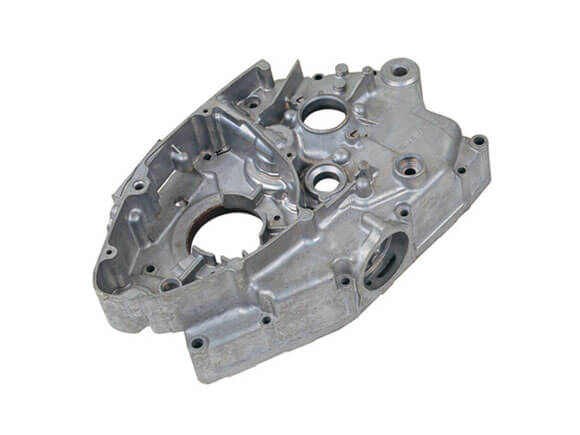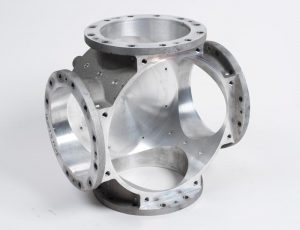The Relevance of Aluminum Casting in High-Quality Manufacturing Techniques
Light weight aluminum casting has arised as a keystone in high-grade manufacturing methods. Its lightweight homes and extraordinary strength make it a preferred selection for different industries. Producers benefit from its layout adaptability and marginal waste generation. As the need for sophisticated products grows, understanding the nuances of aluminum casting ends up being essential. This exploration exposes not just its benefits but additionally the developing innovations that shape its future in manufacturing. What lies in advance for this cutting-edge process?

The Advantages of Aluminum Spreading
Although different casting approaches exist, light weight aluminum casting stands out because of its various advantages. One of the main benefits is its light-weight nature, which considerably lowers transport expenses and power consumption in applications. Aluminum likewise displays exceptional rust resistance, making it suitable for long-lasting parts in diverse settings. The casting procedure permits intricate styles, enabling manufacturers to create complex shapes with high accuracy and very little waste. Additionally, aluminum has premium thermal and electric conductivity, making it appropriate for a variety of industrial applications. The high strength-to-weight ratio boosts the structural honesty of cast items, giving sturdiness without the included mass. Aluminum spreading can be adapted to different strategies, such as sand spreading or die spreading, which widens its applicability across markets. Generally, these benefits setting light weight aluminum casting as a favored selection in modern manufacturing, adding to performance and sustainability.
Trick Applications of Aluminum Spreading
Light weight aluminum casting locates substantial applications throughout various markets because of its advantageous properties. In the auto sector, it is widely utilized for making engine blocks, transmission instances, and wheels, advertising light-weight styles that improve fuel effectiveness. The aerospace industry also gains from aluminum casting, where elements such as real estates and brackets are generated to fulfill rigorous weight and stamina needs.
Additionally, the electric field employs aluminum casting for generating housings and warmth sinks, which are necessary for effective thermal administration in electronic tools. Precision aluminum casting. The building market makes use of aluminum spreadings for building components, window frames, and components, adding to both looks and longevity
The customer products industry includes aluminum spreading in products like pots and pans and showing off equipment, leveraging the product's stamina and corrosion resistance. Generally, the versatility of aluminum spreading makes it a vital procedure in meeting diverse production requires throughout multiple areas.
The Process of Aluminum Casting
Casting aluminum includes several well-defined actions that change resources right into ended up elements. The procedure starts with melting light weight aluminum in a furnace, reaching temperature levels around 660 levels Celsius. Once melted, the liquid aluminum is poured right into a mold, which takes the form of the preferred component. Various mold types, including sand, permanent, and investment mold and mildews, are utilized relying on the application.
After pouring, the light weight aluminum strengthens and cools down, creating a rough casting. This casting undergoes a series of finishing processes, such as machining, to achieve accurate dimensions and surface top quality. Quality assurance actions are implemented throughout to guarantee the integrity and strength of the end product. As soon as all procedures are total, the completed aluminum components await various applications, showcasing the versatility and performance of aluminum spreading in manufacturing strategies. Each step is critical in attaining high-quality outcomes, making this procedure necessary in making markets.
Technologies in Aluminum Casting Technology
Current improvements in aluminum casting modern technology have actually changed production procedures substantially. Advancements such as advanced spreading methods, combination of smart production, and sustainability methods are reshaping the industry. These advancements not just improve efficiency however additionally address ecological problems, paving the method for a more lasting future in aluminum spreading.
Advanced Spreading Methods
As producers seek greater effectiveness and sustainability in production, ingenious developments in light weight aluminum casting modern technology have arised to satisfy these demands. Advanced casting techniques, such as die spreading, investment casting, and sand spreading, have been fine-tuned to improve precision and reduce waste. Pass away casting enables for faster production rates and tighter tolerances, making it optimal for high-volume items. Investment spreading, known for its capability to create complicated geometries, makes it possible for elaborate layouts with superior surface coatings. On the other hand, sand casting remains prominent for its flexibility and cost-effectiveness, especially in low-volume applications. These methods not just enhance the high quality of light weight aluminum elements but additionally add to minimized power usage, lining up with market objectives for sustainable techniques in producing procedures.
Smart Production Assimilation
How can clever production integration change light weight aluminum spreading innovation? By including sophisticated technologies such as the Net of Things (IoT), synthetic knowledge (AI), and data analytics, smart manufacturing improves efficiency and accuracy in light weight aluminum useful site spreading procedures. Real-time surveillance of tools and assembly line enables for prompt changes, reducing waste and downtime. Anticipating maintenance powered by AI minimizes equipment failures, ensuring consistent high quality. Furthermore, information analytics can optimize casting criteria and layouts, causing better product use and minimized cycle times. These advancements help with seamless interaction in between drivers and makers, fostering a much more agile manufacturing atmosphere. Overall, clever manufacturing integration substantially raises the abilities of aluminum casting, advertising greater high quality results and even more responsive production practices.
Sustainability Advancements
While the light weight aluminum casting industry encounters boosting stress to take on sustainable techniques, innovations are emerging that substantially decrease its environmental influence. Advanced reusing techniques now make it possible for suppliers to make use of as much as 95% recycled light weight aluminum, substantially decreasing power intake and waste generation. Furthermore, the assimilation of low-emission innovations, such as electrical melting furnaces, lessens greenhouse gas exhausts associated with traditional casting techniques. In addition, the advancement of green coverings and binders replaces unsafe chemicals, enhancing workplace safety and reducing environmental pollution. These developments not only line up with international sustainability objectives yet also enhance the total efficiency and quality of aluminum products. As the sector advances, these innovations will look at this now certainly play an important role in promoting an extra lasting future for aluminum casting.
Comparing Light Weight Aluminum Casting With Various Other Approaches
In contrasting light weight aluminum casting with various other producing techniques, several vital aspects arise. Price resilience, toughness and effectiveness, and design adaptability act as crucial metrics for examination (Aluminum Foundry). Assessing these facets can supply understandings into the benefits and restrictions of aluminum spreading in various production contexts
Price Effectiveness Evaluation
Expense performance remains a vital factor to consider in manufacturing procedures, particularly when reviewing light weight aluminum casting versus alternate techniques. Light weight aluminum casting commonly offers a lower first investment compared to methods such as steel forging or machining, which need more expensive and fancy devices. Furthermore, light weight aluminum's lightweight nature can decrease transportation prices and power intake throughout manufacturing. The capability to produce intricate forms with minimal waste even more improves its cost-effectiveness, as much less product is discarded during the manufacturing process. Aluminum casting typically permits for quicker manufacturing cycles, leading to decreased labor expenses and faster turn-around times. To summarize, when comparing expense performance, aluminum spreading often becomes a favorable choice, offering producers monetary advantages together with top notch result.
Stamina and Toughness
Stamina and toughness are vital aspects when reviewing production approaches, specifically in the context of aluminum spreading. Contrasted to various other techniques such as plastic injection molding and steel construction, aluminum casting provides distinctive benefits. The intrinsic properties of aluminum, combined with the casting procedure, lead to lightweight yet robust parts that can hold up against significant stress and ecological variables. Unlike plastics, which might weaken gradually, light weight aluminum maintains its integrity and performance under heats and pressures. Furthermore, while steel elements can be larger and vulnerable to deterioration, light weight aluminum resists rusting, enhancing longevity. This combination of toughness and longevity makes light weight aluminum casting a favored choice for industries calling for reputable performance popular applications, such as aerospace and automotive markets.
Design Adaptability Contrast

The Future of Light Weight Aluminum Casting in Production
How will developments in innovation form the future of aluminum casting in manufacturing? The combination of automation and man-made knowledge is expected to reinvent aluminum spreading procedures. These innovations can boost accuracy and effectiveness, decreasing waste and production costs. In addition, the development of 3D printing methods permits quick prototyping and tailored layouts, allowing makers to react quickly to market needs.
Sustainability is additionally an essential focus, with advancements intended at reducing energy consumption and reducing ecological influence. Strategies such as die spreading and investment spreading are advancing to incorporate recycled aluminum, promoting a round economy.
Innovations in products science may lead to the growth of lighter, more powerful light weight aluminum alloys that might broaden the applications of aluminum spreading throughout different markets. Generally, the future of aluminum casting in manufacturing will likely be identified by raised effectiveness, adaptability, and sustainability, positioning it as an important component of modern-day production techniques.
Often Asked Inquiries
How Does Light Weight Aluminum Casting Influence Environmental Sustainability?
Light weight aluminum spreading positively influences environmental sustainability by advertising recycling, decreasing energy usage compared to other steels, and lessening waste. Its lightweight residential or commercial properties additionally result in decrease discharges throughout transportation, sustaining greener methods in numerous markets.
What Are the Expense Ramifications of Light Weight Aluminum Casting?
Aluminum spreading commonly entails greater preliminary prices because of product and processing expenditures. Nevertheless, its toughness and lightweight residential properties can yield long-term financial savings by reducing upkeep and transport costs, eventually stabilizing the economic effects for producers.
Can Light Weight Aluminum Spreading Be Recycled Effectively?
Light weight aluminum casting can be reused properly, as the material preserves its residential or commercial properties throughout the recycling procedure. This permits for the manufacturing of high-grade parts while minimizing waste and reducing energy consumption connected with brand-new light weight aluminum manufacturing.
What Precaution Are Needed Throughout Light Weight Aluminum Spreading?
Precaution during aluminum spreading consist of utilizing personal safety tools like goggles and gloves, guaranteeing appropriate ventilation, maintaining equipment, and following methods for handling liquified steel to stop burns, inhalation risks, and other possible crashes.

How Does Light Weight Aluminum Spreading Affect Item Layout Adaptability?
Light weight aluminum spreading improves product design flexibility by enabling intricate shapes and light-weight frameworks. This technique permits designers to discover cutting-edge arrangements, leading to functional applications throughout different industries while maintaining toughness and toughness in the end products.
Aluminum casting can be adapted to numerous methods, such as sand casting or pass away casting, which expands its applicability across sectors. Once all procedures are total, the ended up aluminum components are all set for different applications, showcasing the versatility and performance of light weight aluminum casting in manufacturing strategies. As makers seek better effectiveness and sustainability in manufacturing, ingenious improvements in aluminum spreading innovation have actually arised to meet these needs. Unlike plastic injection molding, which might need comprehensive tooling adjustments for style changes, light weight aluminum casting can suit modifications extra quickly throughout the production cycle. Improvements in materials science might lead to the development of lighter, more powerful aluminum alloys that can increase the applications of aluminum spreading across different industries.